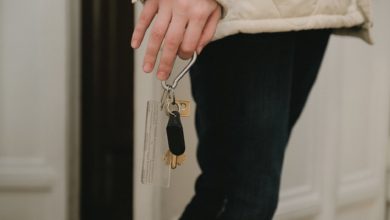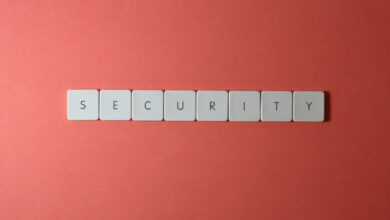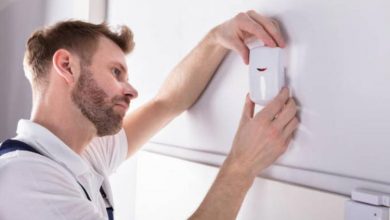Common Home Security Mistakes: Hiding Spare Keys Outside
KEY TAKEAWAYS
Have you ever found yourself locked out of your home, desperately searching for a spare key? It’s a frustrating experience that many of us have faced at least once. Some people resort to hiding spare keys outside their homes to avoid this situation.
In this article, we will explore the practice of hiding spare keys, the associated risks, and alternative solutions to ensure the security of your property.
What are Spare Keys?
Spare keys are additional copies of your house keys made for emergencies or for providing access to family members, friends, or trusted individuals. They are a backup plan when you find yourself without your primary set of keys.
Having spare keys can be a lifesaver during situations like locking yourself out or misplacing your keys. It provides a convenient solution to regain access to your home without calling a locksmith or resorting to more drastic measures. However, the challenge lies in finding a secure and accessible place to hide these spare keys.
Traditional Hiding Spots
Over the years, people have devised various hiding spots for spare keys, hoping to keep them safe while ensuring easy access when needed. Let’s take a look at some of the commonly used traditional hiding spots:
-
Under the Doormat: A cliché location that is easily accessible but well-known to burglars.
-
In potted plants: Seems inconspicuous but is another widely known hiding spot that experienced thieves often check.
-
Inside fake rocks: Some homeowners use artificial rocks with hidden compartments, but their appearance can give them away.
-
Key hiders: Magnetic key holders or fake sprinkler heads are used, but determined thieves can still identify them.
Risks and vulnerabilities
Hiding spare keys outside your home carries several risks and vulnerabilities that you need to consider:
Burglary risks
Using common hiding spots increases the likelihood of burglars discovering your spare keys. Once they can access your keys, they can easily enter your home and potentially steal valuable possessions or cause harm. It’s crucial to prioritize the security of your property to prevent such incidents.
Weather-related risks
Exposing spare keys to outdoor elements can result in damage, particularly from rain, extreme temperatures, or humidity. Over time, these environmental factors can render the keys useless, leaving you stranded when you need them the most.
Potential access by unauthorized individuals
Someone else could gain unauthorized access to your home if they discover your hidden spare key. This includes individuals with malicious intent or those who accidentally stumble upon the key. It’s essential to minimize the chances of unauthorized individuals finding your spare keys.
Alternative Hiding Solutions
To ensure the security of your property while still maintaining accessibility to spare keys, consider these alternative hiding solutions:
Key lockboxes
Key lockboxes provide a secure and discreet method of storing spare keys. These boxes are typically made of durable materials and feature combination locks or electronic keypads. Only trusted individuals can access the key stored inside by setting a unique code.
Smart locks and keyless entry systems
Modern advancements in home security offer keyless entry systems and smart locks. These solutions eliminate the need for physical keys. With options such as fingerprint recognition, key cards, or smartphone apps, you can control access to your home more effectively and avoid the risks of hiding physical keys.
Trusted neighbors or friends
Instead of relying solely on hidden spare keys, consider entrusting a spare key to a close neighbor, family member, or friend who lives nearby. This option provides a secure alternative and allows you to retrieve the key from a trusted individual whenever needed.
Best Practices for Hiding Spare Keys
If you still prefer to hide spare keys outside your home, here are some best practices to follow:
Choose a secure location
Select a hiding spot that is not easily discoverable or accessible. Avoid obvious areas near the front door or areas visible from the street. Look for less predictable locations that blend in naturally with the surroundings.
Keep it inconspicuous
Ensure that your hiding spot does not draw attention or arouse suspicion. Avoid popular hiding spots and choose a location unlikely to be searched by potential burglars.
Regularly change the hiding spot.
Change the hiding spot periodically to minimize the risk of someone discovering your spare key. By rotating locations, you reduce the chances of unauthorized individuals finding your key and gaining access to your home.
Avoid obvious hiding spots.
Stay away from common hiding spots like under doormats, potted plants, or fake rocks. These locations are well-known to burglars and offer little to no security.
Frequently Asked Questions
Are there any risks associated with hiding spare keys outside?
Yes, hiding spare keys outside poses risks such as burglary, exposure to weather-related damage, and potential access by unauthorized individuals.
What are some alternative solutions to hiding spare keys outside?
Alternative solutions include using key lock boxes, implementing smart locks and keyless entry systems, or entrusting a spare key to a trusted neighbor or friend.
How can I choose a secure location for hiding spare keys?
Look for a hiding spot that is not easily discoverable or accessible, avoiding obvious areas near the front door or visible from the street.
Is it necessary to change the hiding spot for spare keys regularly?
Yes, regularly changing the hiding spot reduces the chances of unauthorized individuals finding your spare key and gaining access to your home.
What are some common hiding spots to avoid when hiding spare keys?
It is advisable to avoid common hiding spots such as under doormats, inside potted plants, or in fake rocks. These locations are well-known to potential burglars and offer little to no security. Instead, choose more inconspicuous and less predictable hiding spots that are unlikely to be searched by unauthorized individuals.
Conclusion
Hiding spare keys outside your home can be a risky practice that compromises the security of your property. While traditional hiding spots may seem convenient, they are often predictable and well-known to potential burglars. Instead, consider alternative solutions like key lock boxes, smart locks, or entrusting a spare key to a trusted neighbor or friend.
By prioritizing security and following best practices, you can ensure the safety of your home while maintaining access to spare keys when needed. Remember, it’s essential to regularly evaluate and update your security measures to stay one step ahead of potential threats. Finally, factor in the cost of maintenance and repairs for home security systems, ensuring their continued effectiveness and reliability.
Are you finding new ways and high-tech solutions to keep your smart home safe from intruders and unwanted guests? Read through our blogs at Security Forward to know more.





